
St. Dunstan in the East Church Garden and Ruins in London CK Travels
The tranquil ruins of the medieval church, St Dunstan in the East, is one of London's leafy hidden spots. The 1000-year-old ruin, a mere stone's throw from the Tower of London, is not well-known to tourists, unlike its famous neighbour, but has the allure of an undiscovered urban sanctuary.
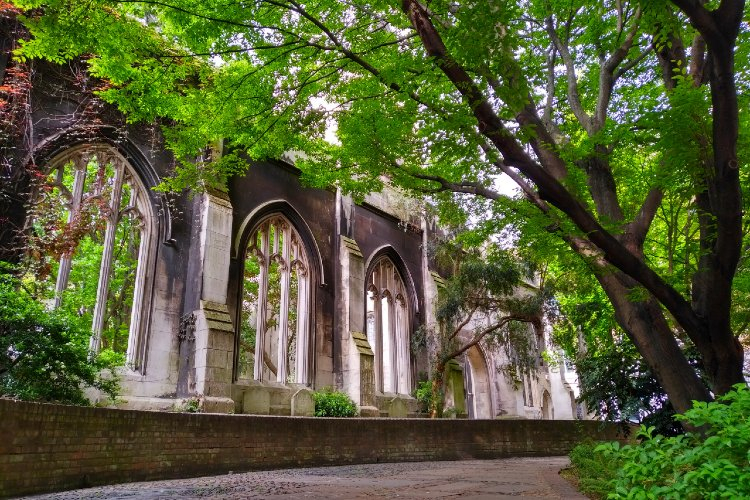
St Dunstan in the East Gardens History and Facts History Hit
A Brief History of St Dunstan in the East. St Dunstan in the East Church was originally built in circa 1100 CE with additions made in 1391 of a new south aisle, the church was repaired again in 1631 and 1817. However, in 1666 during the Great Fire of London in which four-fifths, nearly 90 percent, of the homes in the city were destroyed, the.
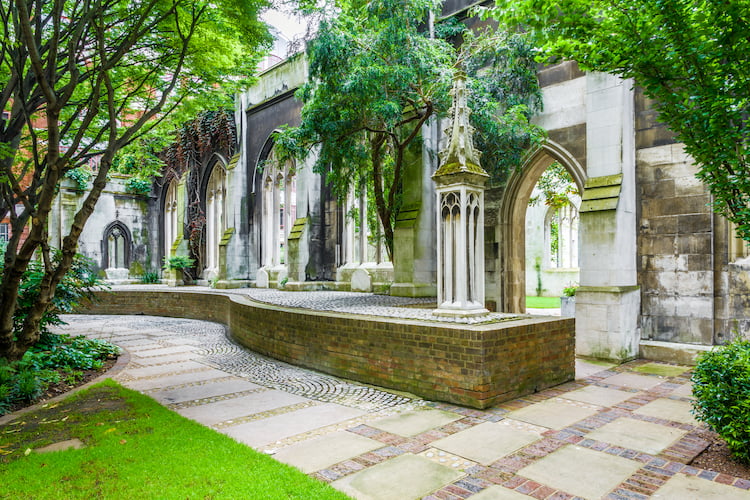
St Dunstan in the East History and Facts History Hit
St Dunstan-in-the-East was a Church of England parish church on St Dunstan's Hill, halfway between London Bridge and the Tower of London in the City of London. The church was largely destroyed in the Second World War and the ruins are now a public garden.

Secret London St Dunstan In The East Glory of the Snow
St Dunstan-in-the-East was a Church of England parish church on St Dunstan's Hill, halfway between London Bridge and the Tower of London in the City of London. The church was largely destroyed in the Second World War and the ruins are now a public garden. History

St Dunstan in the East The Ruined Church That's Now A Beautiful Garden
These help us earn a small commission at no additional charge to you. A little spot of solace and a world away from the usual hustle and hubris of central London, St. Dunstan in the East church garden, just a short walk from both the Tower of London and St Pauls offers a brief respite from the capital's occasional craziness.

St DUNSTAN'S in the EAST A Bit About Britain
St Dunstan in the East Church Garden is a truly unique space set within the ruins of a Wren church. The Church of St Dunstan was originally built around 1100 and is a Grade I listed building. A new south aisle was added in 1391 and was repaired in 1631. It was severely damaged in 1666 by the Great Fire of London.
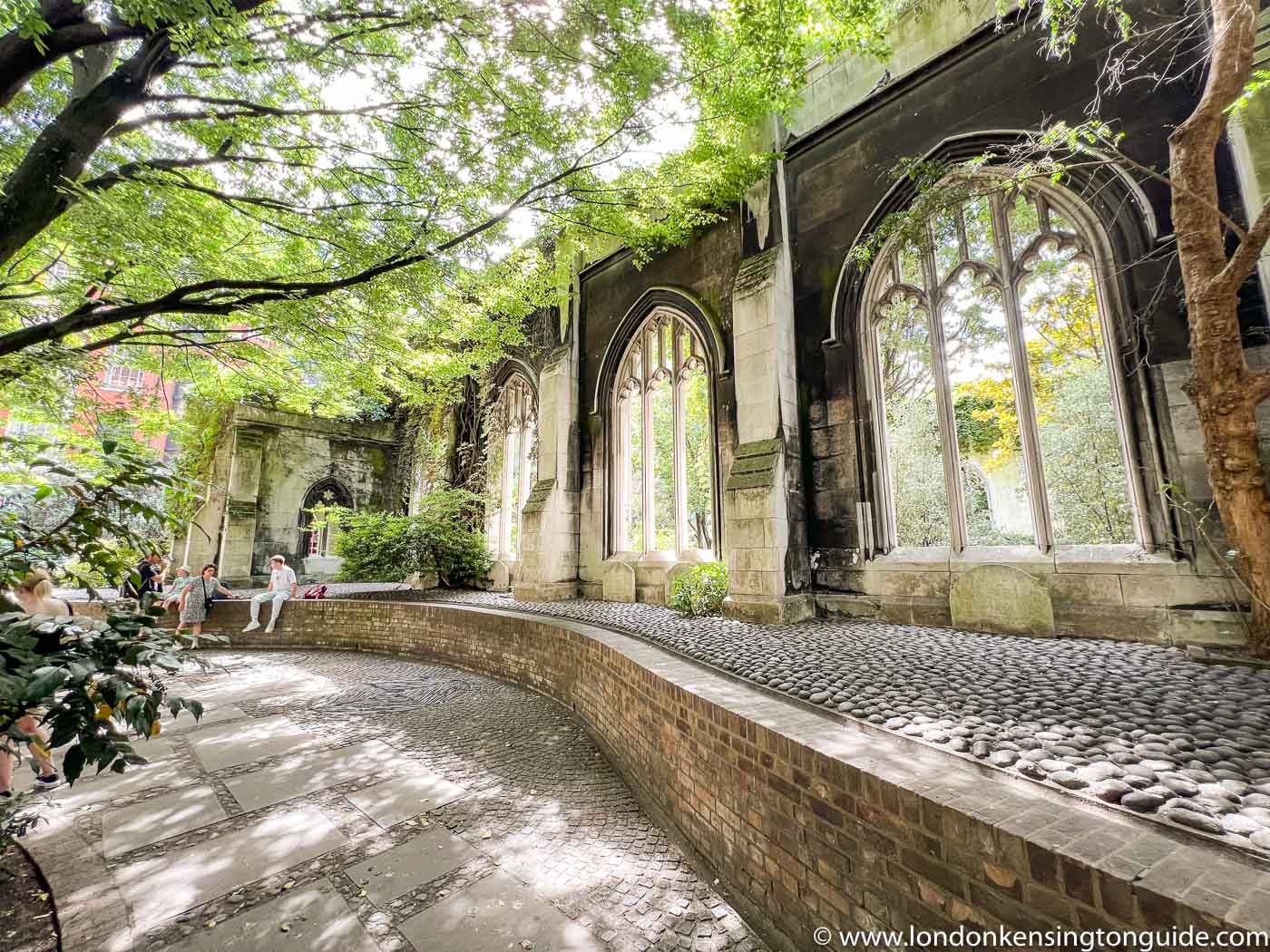
Discover the Serenity of St DunstanintheEast A Hidden Gem in the Heart of London London
The church of St.Dunstan-in-the-East has survived a lot during its 900-year history, including the Great Fire of London in 1666. An English parish church located halfway between the Tower of.

St Dunstan in the East The Ruined Church That's Now A Beautiful Garden
5. Model in park. This is not a regular shift. [/caption] St Dunstan in the East Church Garden is on Dunstan's Hill. Take the underground to Cannon Street or Bank station. The garden is just a five-minute walk from both the Monument to the Great Fire of London and the Tower of London. It is open every day except for Christmas Day, Boxing Day.

St DunstanintheEast, City of London Our World for You
St Dunstan in the East was a Church of England parish church on St Dunstan's Hill, halfway between London Bridge and the Tower of London. Originally built around 1100, it was severely damaged in 1666 by the Great Fire of London and then in the Blitz of 1941 during the Second World War. In 1967 the City of London decided to turn the remains.

The Secret St Dunstan In The East Church Garden In London The Ultimate Guide
The chapters in St Dunstan in the East's history are like an epic tale with black magic, the Devil, buildings ablaze, and the casualties of war. This structure has stood on this spot for well over 900 years, going on a thousand, and it's survived through most of London's turbulent history. The Viking invasions, Saxon settlements, the.

St Dunstan in the East The Ruined Church That's Now A Beautiful Garden
St Dunstan-in-the-East is located on the north side of the Thames and a short walk from Tower Bridge and can be easily accessed by public transportation. The nearest tube station is Tower Hill, which is served by the Circle and District lines. From there, it is just a short 5-10 minute walk to the ruins..

St. Dunstan in the East Church Garden My way of travel
In 1967 the City of London turned the ruins of St Dunstan into a public park, and the Church's loss became London's gain. Personally, I've been converted to the cause, now believing that every park should have stunning ruins in the middle. Trees grow through windows and vines wind themselves around walls of St Dunstan in the East, whilst.

St Dunstan in the East Visit London's Charming Urban Sanctuary
St. Dunstan in the East Church Gardens are often referred to as the most beautiful gardens in the City of London, and understandably so! The church itself was built in the early 12th century and survived unscathed until the Great Fire of London in 1666. Although the fire seriously damaged the church, it was not severe enough to warrant a complete rebuild.
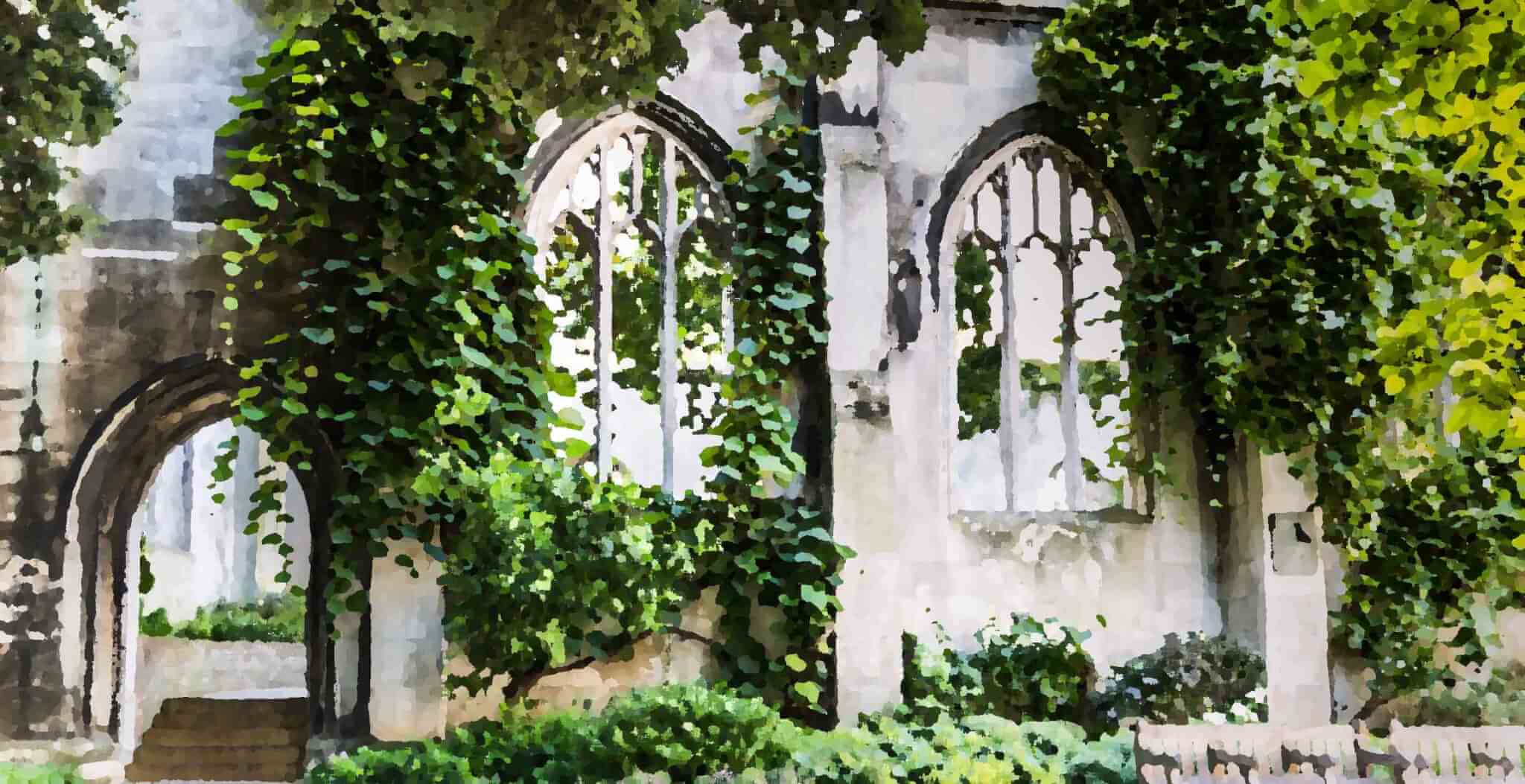
St. Dunstan in the East Church Gardens, City of London. Part of the Secret London series by
The gardens snake around the ruins of the Church of St Dunstan, originally constructed in the early 12th century. The church was badly damaged by the Great Fire of London in 1666 and was sporadically repaired over the coming years rather than being fully rebuilt. A tower and steeple designed by famed architect Sir Christopher Wren were added in.

St Dunstan In The East The Fairytale Garden BaldHiker
St Dunstan-in-the-East was originally built in around 1100 AD, with a new south aisle added a could of centuries later in 1391. The church was repaired in 1631 at significant cost, however, the alterations would be severely damaged during the Great Fire of London in 1666. Rather than completely rebuilding St Dunstan, the church was patched up.
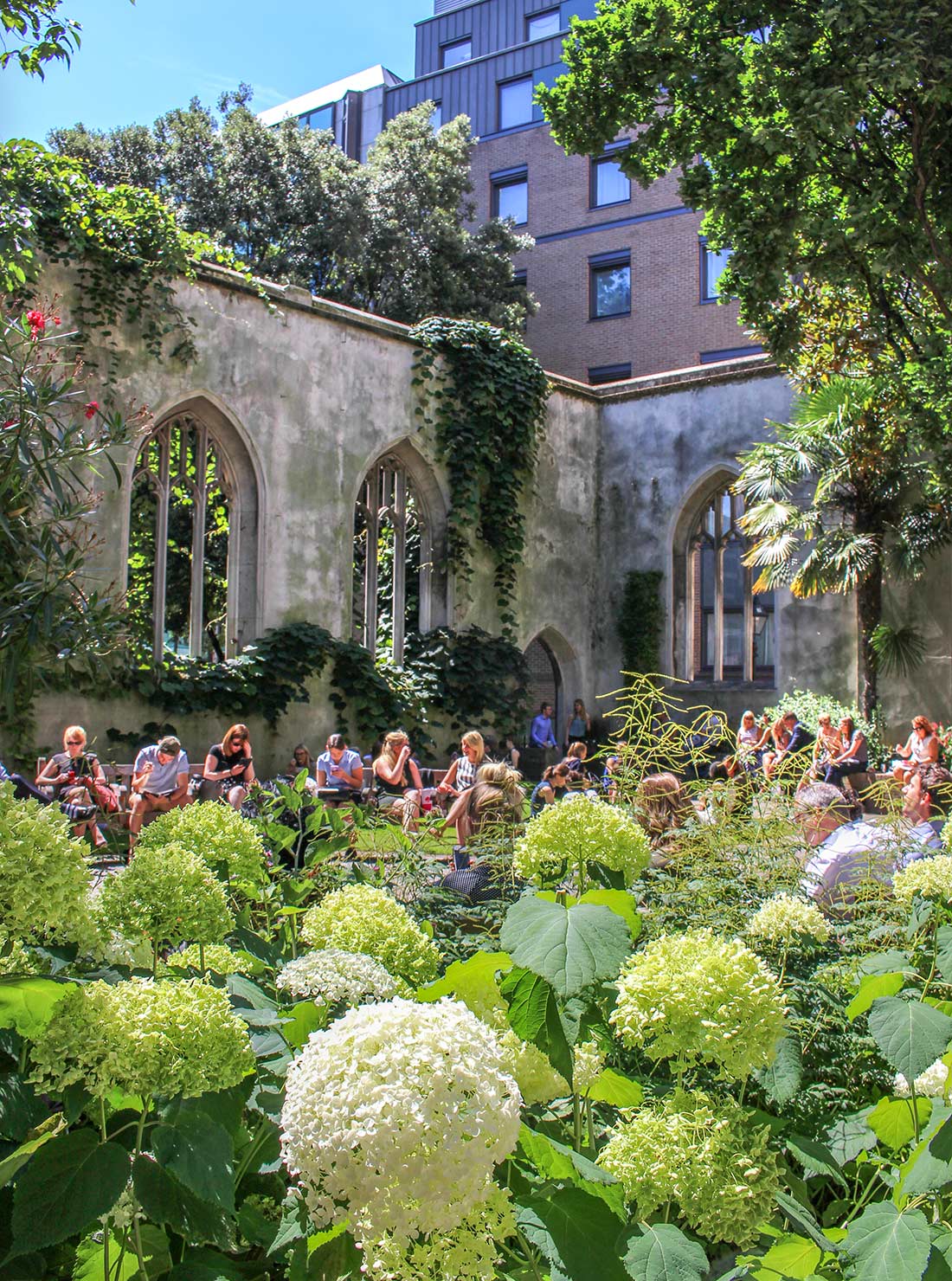
St. Dunstan in the East Church Garden and Ruins in London CK Travels
St. Dunstan, who the church was named after, was a popular former Archbishop of Canterbury. The first incarnation of St. Dunstan in the East was constructed around 1100. It was expanded & remodeled over the course of the subsequent centuries. In 1666, the church was severely damaged in the Great Fire of London.